|
24th
June
Doonfoot
Clear blue
cloudless skies filled
us with optimism as we arrived at Doonfoot, south of Ayr. A cool, but
welcome sea breeze made the sun’s warmth comfortable. All we
needed was
for nature to let us see its workings. The chirping of House Sparrows
and House Martins filled the air as we set off to explore the mouth of
the River Doon. I snapped a couple of the Martins as they had a pit
stop at the side of the pool adjacent to the Castle Walk car park. Also
present at the poolside were masses of Sea Club-rushes, a plant known
to foragers as its roots, shoots and seeds are edible (not recommended
though). A busy White-tailed Bumblebee was harvesting the nectar in
flowers of purple Tufted Vetch. White Bramble flowers decorated the
edges of the grassy dunes, promising juicy fruits in weeks to come.
House Martin
|
Sea Clubrush
|
White - tailed Bumblebee
|
Bramble
|
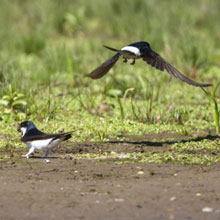
|
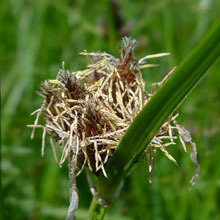
|
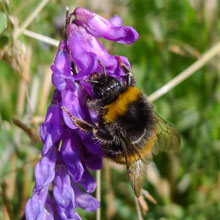
|
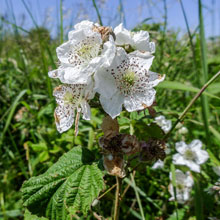
|
The tide seemed
to be going out.
We could see lots of gulls. Yellow legs and charcoal grey back told me
a fairly large passing bird was a Lesser Black-backed Gull.
It’s brown
wing tips and grey back lead me to think it was immature, probably it
was in its second cycle. A much smaller Gull with a dark brown head
was a Black-headed Gull. A bold Rook passed, unmistakable through
it’s
large grey beak as a nosey Mute Swan checked us out for bread - no
chance. It is our policy to observe with a minimum of interference.
Lesser Black - backed Gull
|
Black - headed Gull
|
Rook
|
Mute Swan
|
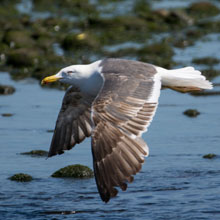
|
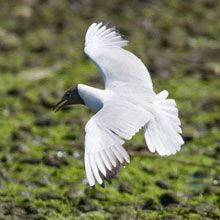
|
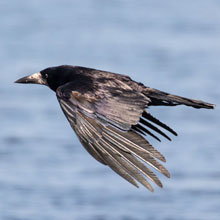
|
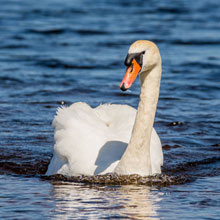
|
Most prominent
in the group of
gulls gathered on the sands were Great Black-backed Gulls. They were
the biggest birds and had light pink legs with the black backs and
wings. Another familiar Gull, the Herring Gull flew in. Somewhat
smaller than the Great and Lesser Black-backed Gulls, it had pink legs
and light grey back and wings. What looked like a 2nd cycle Great
Black-backed Gull breezed in carrying a mystery object in its beak. It
dropped it several times, presumably to reveal its edible contents,
however it left it to other gulls after a while. And with that, as we
looked south to the picturesque scene dominated by the ruin of Greenan
Castle, we decided to move on to Greenan car park to see what goodies
would reveal themselves there.
Great Black - backed Gull
|
Herring Gull
|
3rd Cycle Great Black - backed Gull |
Greenan
Castle
|
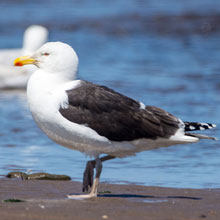
|
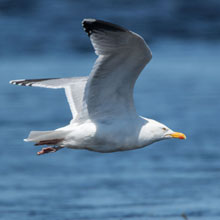
|
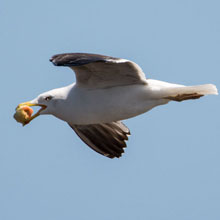
|
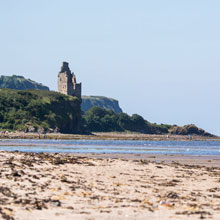
|
At the car park
as we started our
circuit around Greenan Castle, more Sparrows were moving from branch to
branch in the bushes. It is always nice to see them as their UK numbers
have mysteriously plummeted over the last few decades. In the bushes
just below the Castle I got a picture of what I think is a juvenile
Willow Warbler, though I’ve yet to confirm this. On the
grassy dunes I
photographed a couple of pretty wildflowers. The first was Meadow
Cranesbill. A member of the Geranium family, its origins are in the
Altai mountains in Central Asia, but it is now native to Europe as well
as Asia.
Male House Sparrow
|
Female House Sparrow |
Juvenile Willow Warbler? T.B.C.
|
Meadow Cranesbill
|
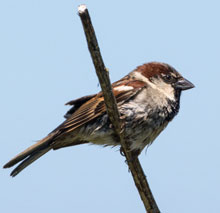
|
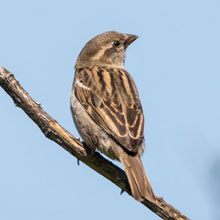
|
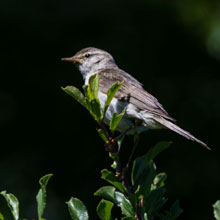
|
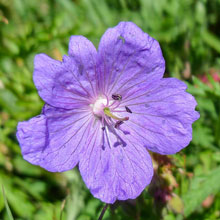
|
The second
flower that was
beautifying the dunes was Lady’s Bedstraw. It got its name
from the
belief that the Virgin Mary filled her baby’s cradle with
these lovely
yellow flowers, and not the more usual drab grass straw. Away from the
dunes, on the rocky cliff supporting the Castle ruin, I found a
handsome patch of Thrift. It reminded me of the old
“threepenny bit” -
the coins minted 1937-52 had an image of the plant on the reverse side.
John drew my attention to a Grey Heron that was prowling along the
seashore. I plodded out toward the sea to get a closer picture. While I
was there a Carrion Crow was trying to get in on the action.
Lady's Bedstraw
|
Thrift
|
Grey Heron
|
Carrion Crow
|
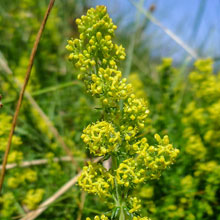
|
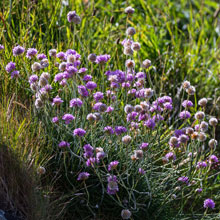
|
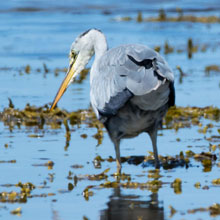
|
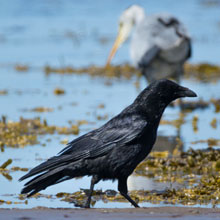
|
We scaled the
steep path ( Very
bloody steep! Ed ) up to the Castle and the made our way along the
sides of the field behind the Castle. Before too long we caught sight
of a Goldfinch twittering from its perch high on a tree branch. Moments
later a Yellowhammer flew in (see “Pictures of the
Week”, below) and
landed high on the next tree and proceeded with its call, “a
little bit
of bread and no cheese” (say the first seven syllables
quickly then “no
cheese” slowly). I noticed a few tiny, but very pretty Field
Pansies at
the edges of the potato field. Pansies are loved for their seemingly
smiling faces. Their “cousin” in the Viola family,
the Violet, is famed
for its scent. Nearer the hedges there were also some tiny, but nice
Field Speedwell, another Asiatic plant which was introduced here in the
19th century. Completing a trio of interesting wildflowers we found
around at the side of the tattie field was Greater Sea Spurrey. It is
more commonly found around salt marshes, but recently has been turning
up on salty roadsides - thriving on salt provided by the road gritters.
Goldfinch
|
Field Pansy
|
Common Field Speedwell
|
Greater Sea Spurry
|
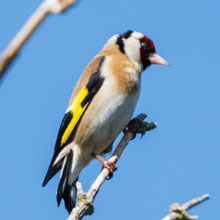
|
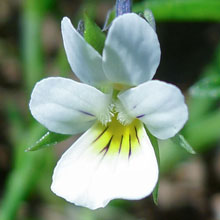
|
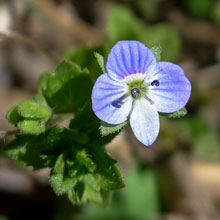
|
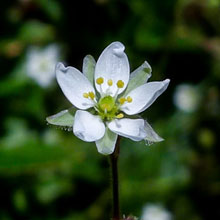
|
We eventually
descended off of the
raised field onto Greenan Road and from there back North onto the
footpath that leads to the Car Park. On that path we were joined by a
pair of Stonechats. The female came closest
to us,
although I wondered if it was merely trying to get away from the
attentions of the Male. We then spent some time on the beach behind the
car park. Dominating the shore at that point was a huge Wild Angelica
plant. Oils extracted from this species have been used in medicine,
perfume and confectionery. We watched yet more Sparrows foraging, and
apparently eating green seaweed. My final capture of the afternoon was
of a fine Oystercatcher that had been gradually edging its way towards
us, as it probed the many little saltwater pools for food. Eventually
it reached its limit of tolerance and flew off further down shore.
Female Stonechat
|
Wild Angelica
|
Female House Sparrow
|
Oystercatcher
|
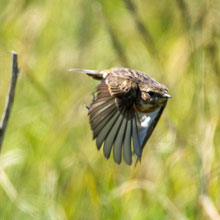
|
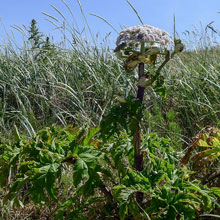
|
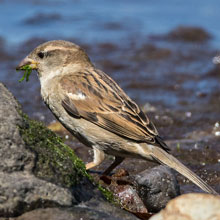
|
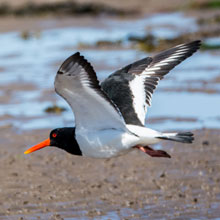
|
What a very
pleasant trip. The
Doonfoot coast is very scenic and we always seem to find many
photo-opportunities, as can be witnessed on this page. What better
reward then than a cup of tea with strawberry tarts! The pastry was a
bit on the soft side, but oh how tasty. ( In future blogs, Strawberry
Tarts will be encoded as "Rich Tea Biscuit"! Ed.)
Pictures of the
Week:
Lesser Black - backed Gull
|
Goldfinch
|
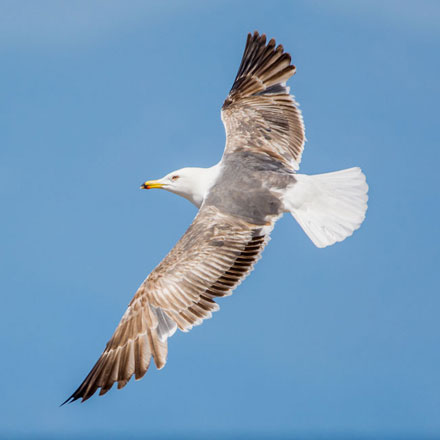
|
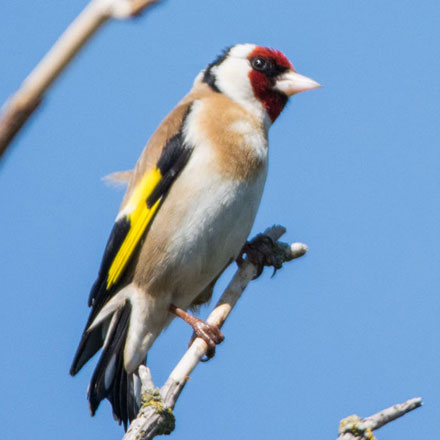
|
Yellowhammer
|
Oystercatcher
|
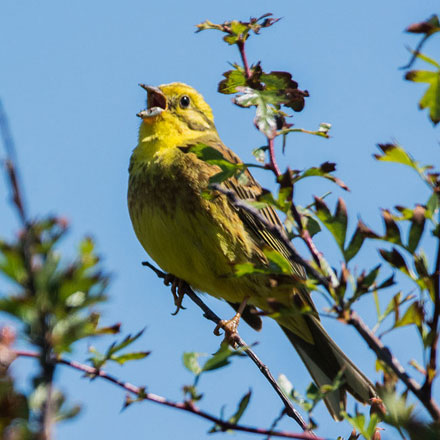
|
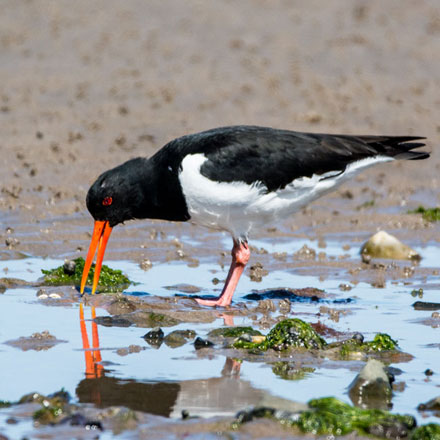
|
June 17th 2018
Barns
Ness
For the first
time in a few weeks
the brighter weather was to be in the east, so all we had to decide was
what part of the Lothian coast would suit us best. The tidal prediction
was low throughout the visit so I decided perhaps Barns Ness with its
varied hinterland would give us the best chance of some interesting
pictures. Dalkeith
Morrisons served us up a
pair of fairly disappointing, tepid breakfasts (7/10) but we pressed on
regardless to the Dunbar area. As we turned into the approach road for
Whitesands and Barns Ness the weather was rather similar to the brekkie
- on the cool side, although the wind was light. I spotted a Skylark as
it descended onto a fence post. The charm of the song of the ascending
Larks was to wear off after an hour or two. Their incessant high
pitched warblings get to you after a while. We parked and then walked
through the derelict caravan site towards open fields to the south. A
Scorpion Fly caught my eye as it darted erratically between high blades
of grass at, typically, 0.5 m/s with 28 beats of its wings every
second. John noticed a doe Roe Deer in a distant field, and then
another much closer with a pair of spotted fawns. The fawns looked
quite young. Their gestation period is 10 months - so they are born
well developed. The deer were drifting east, so we moved east behind
the high wall along the field edge in an attempt to meet them and
perhaps get a closer shot. No chance - they were spooked by a pair of
walkers cutting across the next field! A Yellowhammer appeared atop a
nearby tree, one of over 700,000 Yellowhammer breeding territories in
the UK (according to the RSPB
website).
Skylark
|
Scorpion Fly
|
Female Roe Deer
|
Yellowhammer
|
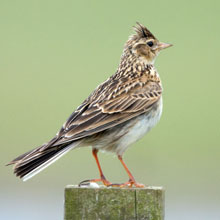
|
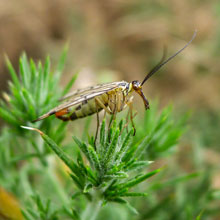
|

|
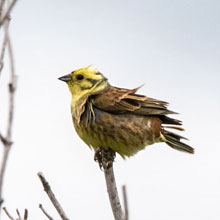
|
The
unmistakable sound of a Song
Thrush perched on the topmost branch of a tree drew us north toward the
sea. I passed a solitary young, blue-flowered Bugloss plant with its
spiny stem and leaves. It was rather unimpressive but was actually the
first one I’d photographed. A large flock of Starlings fled
past, most
of them seemed to be brown juveniles. We sat in a copse waiting for the
birds coming to us for a change. A female Chaffinch obliged.
Song Thrush
|
Bugloss - Anchusa
Arvensis.
|
Starling
|
Female Chaffinch
|
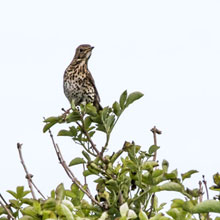
|
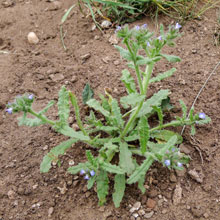
|
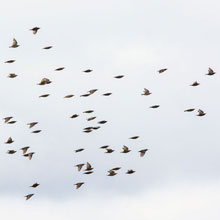
|
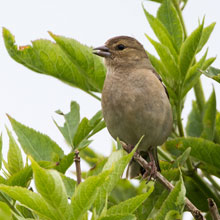
|
And so did a
female Common Blue
Damselfly. It flew onto gorse bushes just below the Chaffinch. We were
well away from water, where they’re usually found, but it is
not
unusual to see them in woody grassland. We left that area, crossed a
sheep’s field and moved through the dunes onto the beach. The
seashore
was, disappointingly, bereft of birdlife, or so it seemed at first. As
I snapped a few pictures of White-tailed Bumblebees on Sea Rocket, a
large Grey Heron squawked as it moved along the along the
water’s edge
some 100m away.
Female Common Blue Damselfly
|
White - tailed Bumblebee
|
Sea Rocket
|
Grey Heron
|
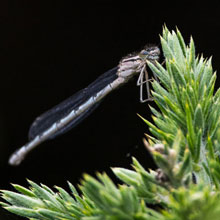
|
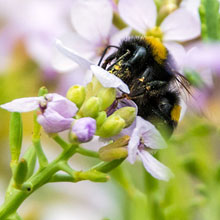
|
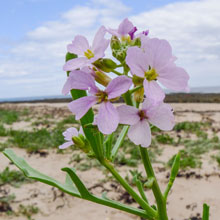
|
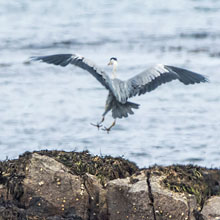
|
Shortly after
the flight of
the Heron we had the flight of the Shelducks. A male Shelduck passed in
an easterly direction to join its mate. They both then passed us
travelling west to settle quite close to us. We were surprised at how
much closer we were able to edge up to them before they were spooked,
not by us, but by another male Shelduck who has eyes for the female. We
moved on west towards the lighthouse and eventually came upon a huge
pile of seaweed with a sulphurous stench that hung in the back of the
throat. A bold little Reed Bunting appeared scouring the pile for
invertebrates. A pair of ever-present Herring Gulls lounged on the
rocks as we neared the car park.
A walker had
told us there
were Shelduck chicks further on, so we rounded the Point to have a wee
look for them but all we could see were roosting Black-headed Gulls. I
did though locate a bonny patch of the rock-loving Biting Stonecrop.
Familiar to gardeners, this plant, although a wildflower, is easy to
control as its roots are short. The Starlings were still very lively,
darting in flocks across the shore. I managed to photograph a ruffled
individual on a bush. At the Point I was delighted to come across a few
plants of Hound’s Tongue. It is thought that the name derives
from the
roughness of the leaves. In the past, herbalists have used it as part
of a cure for madness.
Black - headed Gull
|
Biting Stonecrop
|
Starling
|
Hound's Tongue
|
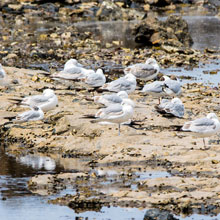
|
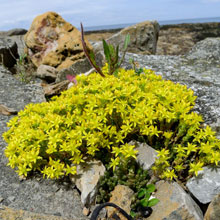
|
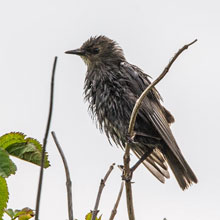
|
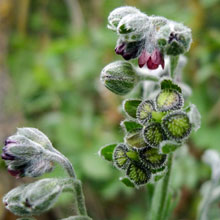
|
As we made
our way back to the car park a male Pied Wagtail was busy on the rocks
gathering grubs, presumably for his nestlings. Close by, a Rock Pipit
was similarly employed, although it seemed to be having a bit less
success. As I sat snapping shots of the Pipit I noticed a clump of
Lady’s Bedstraw on the rocks. In Scandinavian mythology it is
called
“Frigg’s grass” and used it as a sedative
(Frigg, the wife of Odin,
gives her name to the day of the week, Friday). Our final capture of
the day was of a juvenile Meadow Pipit that appeared as I was pouring
out the teas.
Pied Wagtail
|
Rock Pipit
|
Lady's Bedstraw
|
Meadow Pipit
|
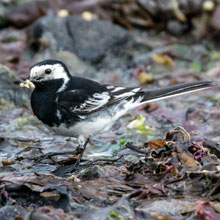
|
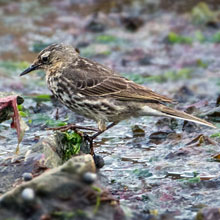
|
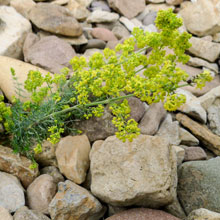
|
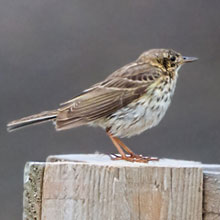
|
With our teas
we savoured a
pair of Apple Lattice Danish pastries, very contented with the wide and
varied collection of pictures we had amassed. We discovered a newby in
the Bugloss so, that alone made the day worthwhile.
Pictures of the Week:
Skylark
|
Scorpion Fly
|
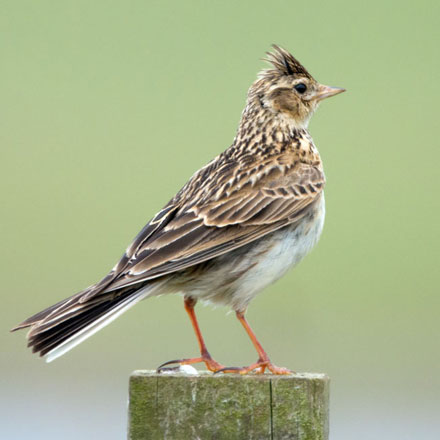
|
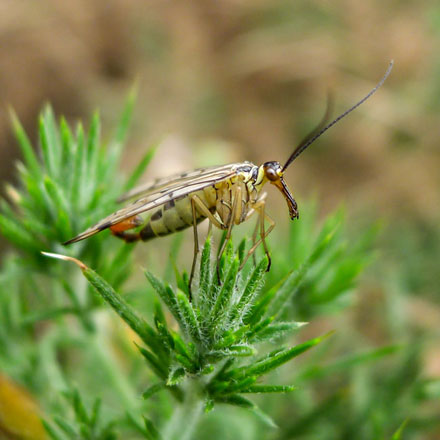
|
Biting Stonecrop
|
Pied Wagtail
|
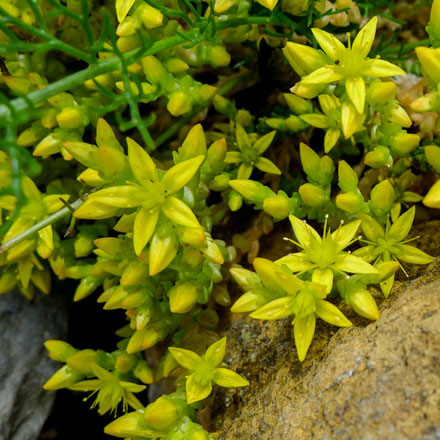
|
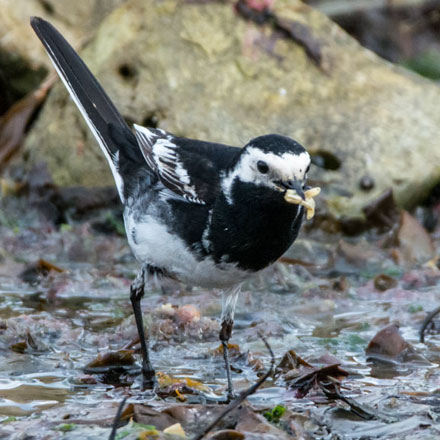
|
June
9th 2018
RSPB Baron’s Haugh
It was my turn
to have Sunday
family commitments, so I decided on a solo Saturday visit to our local
RSPB reserve, Baron’s
Haugh, Motherwell. It is a place that is very
familiar to me, so much so, I thought there was a danger that I could
haven taken many of its features rather for granted. I turned off Manse
Road, through a metal “kissing gate”, down along
the path through
luscious, verdant woodland toward the first hide. I noticed that much
of the woodland floor adjacent to the path was populated with a couple
of uncommon wildflowers. The first of these was the Piggyback plant,
Tolmiea Menziesii. It originates in the North American west coast and
was brought into the UK as an ornamental garden plant, before escaping
and naturalising to our environment. The other fairly rare plant was
European Sanicle, whose name derives from the Latin for
“healthy”, a
clue that it was once used as a medicine. In the past it has been used
to heal wounds and to treat a wide range of conditions such as
dysentery, ulcers, bowel pain, skin conditions, to name but a few. Eventually I
reached the side path
that leads into the Marsh Hide. A Scorpion fly caught my eye as I
paused by some tall grass. Scorpion flies are not related to Scorpions
and are not harmful to humans, although they do look a bit scary. I
then heard frantic and continual tweeting from just above my head.
Looking up I could see a Blue Tit working very hard, scouring a Willow
Tree for caterpillars.
Piggyback Plant
|
European Sanicle
|
Scorpion Fly
|
Blue Tit
|
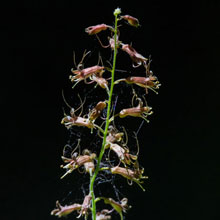
|
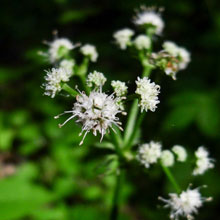
|
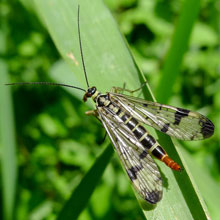
|
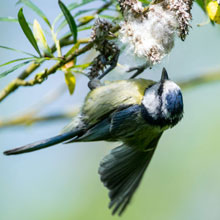
|
Following its
movement lead my
eyes to the source of the tweeting, a fledgling fluttering its wings as
it sat on a branch higher in the tree. I managed a shot of the adult
Tit feeding the young bird (see Pictures of the Week, below). Inside
the hide I scanned the rather bare area of reserve before me. It had
been overgrown with vegetation and was ‘renovated’
some months back to
re-establish the ponds. It was only now just beginning to attract some
birds. A small group of Gadwall were squabbling and I managed a couple
of flight shots. I next moved on to reach the Causeway Hide.
Across the
Haugh I could see a
Grey Heron carefully stalking some unfortunate prey beneath the water.
On the Haugh there were several Coots nests, each viciously guarded by
ever-vigilant parents. I next got a picture of a Moorhen chewing on a
Blue-tailed Damselfly - and I thought they were vegetarians! A nervous
female Mallard rushed her ducklings past the hide. She had done a good
job so far as her eight little ones were now not so little.
Grey Heron
|
Coot
|
Moorhen
|
Female Gadwall
|
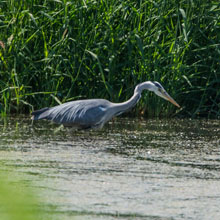
|
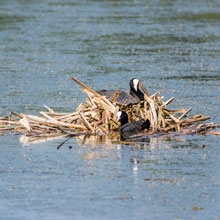
|
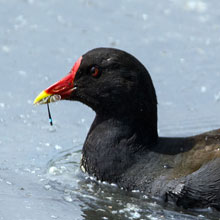
|
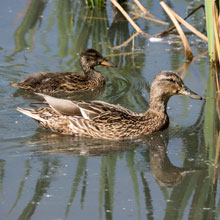
|
About 50m away
from the hide I
watched another concerned parent, a Great Crested Grebe, gently
positioning its large ochre egg as the other parent brought nesting
material to shore up their flimsy-looking nest. Just as I was about to
leave the hide a pair of Mute Swans appeared on the scene with their 5
cygnets. They must have been been resting out of sight on the far side
of the island in front of the hide. I next moved on along the footpath
beside the River Clyde. On its bonny banks I found a lovely yellow
Welsh Poppy and a few insects of interest. The first was a pair of
Blue-tailed Damselflies caught in the act, you might say. They
weren’t
alone. I also got shots of Common Blue Damselflies (see Pictures of the
Week, below). When mating they join together in the so-called
“wheel”
position and the male will then usually remain joined to the female
until she she has laid her eggs, yes, even in mid-air.
Great Crested Grebe
|
Mute Swan
|
Welsh Poppy
|
Blue - tailed Damselfly
|
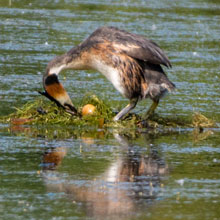
|
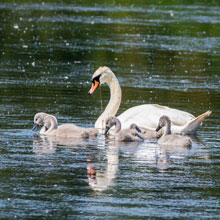
|
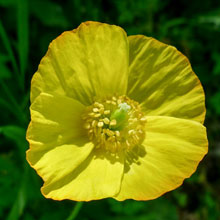
|
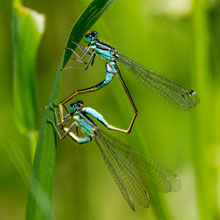
|
The
next insect I met by the Clyde
was a Silver Ground Carpet Moth. It was a long way from a carpet but
did its best to hide under a blanket of leaves. As often happens, as I
tried to get shots of one creature, another turns up, this time it was
a Clouded Border Moth, then seconds later I spied a ragged Peacock
butterfly on a spike of Dame’s Violet. My quartet of insect
observations concluded with a snap of a White-tailed Bumblebee sipping
nectar and gathering pollen from the purple flowers of Comfrey. Behind
each of its rear thighs its pollen baskets were bulging orange, so it
had been working hard, but it showed no signs of slowing.
Silver Ground Carpet Moth
|
Clouded Border Moth
|
Peacock Butterfly
|
White - tailed Bumblebee
|
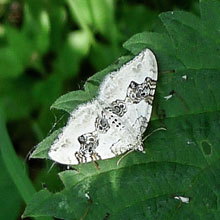
|
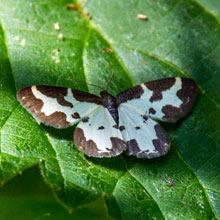
|
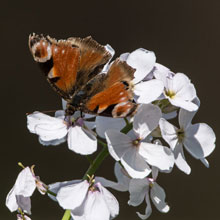
|
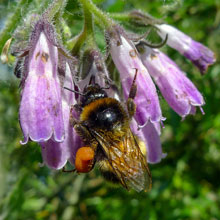
|
Further along
the path I admired
the plentiful, and therefore often overlooked flowers of Wood Avens
(sometimes called Herb Bennet) and their equally attractive spiky,
maroon-coloured seed heads. An ancient protection against rabid dogs
and poisonous snakes, it is a herbal remedy for a wide range of
ailments including diarrhoea, heart disease, halitosis, mouth ulcers
and colic. Alerted by its unmistakable call, I then caught a fleeting
glimpse of a probable juvenile Great Spotted Woodpecker clinging to the
bark of a small riverside tree, before fleeing across the river when it
caught a glimpse of me. I reckoned it was a juvenile as it had a red
bar across the top of its head, rather than on its nape. As time was
pressing I started back to the car park. The Phoenix and Centenary
Hides would have to wait for another day’s blog. I retraced
my steps
along the River Clyde, in awe of its many wildflowers, now in the peak
of bloom.One ubiquitous wildflower I am very fond of is Red Campion.
Its beautiful flowers though are designed to attract insects, not
humans. Butterflies, bees, moths and hoverflies are guided towards the
flowers’ stores of nectar and in the process they unwittingly
transfer
pollen from flower to flower, so participating in the
flowers’ sex
lives!
Another flower
common to the area
is Crosswort, a member of the coffee family whose flowers smell of
honey. I also came across some Lesser Stitchwort, more delicately
formed than the larger Greater Stitchwort (obviously). I passed a large
bush of Wild Roses which was alive with all sorts of insects moving
from flower to flower. One of these was the hoverfly Eristalis
Arbustorum (see Pictures of the Week, below). One final look along the
river for otters (there were none, but often they are there) and I
turned right along a rough path through the woods to the path that lead
to the car park. As I passed the Marsh Hide entrance I heard the call
of a Buzzard and easily found it perched high in a bare tree. Just
before it took off I snapped a shot of it, although it was against the
light.
So rather than
taking its features
for granted I think I actually benefited from my detailed knowledge of
the reserve as I didn’t have to search too hard discovering
where the
birds, flowers and insects were as I’d been doing just that
weekly for
the last decade. I think I’ve given an indication in this
blog of what
a splendid place it is for the nature lover. Maybe you’ll go
there?
Pictures of the
Week:
Scorpion Fly
|
Blue Tit
|
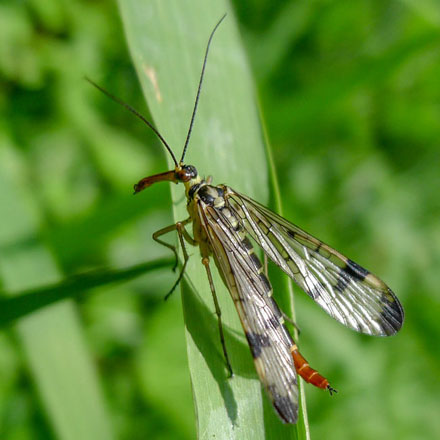
|
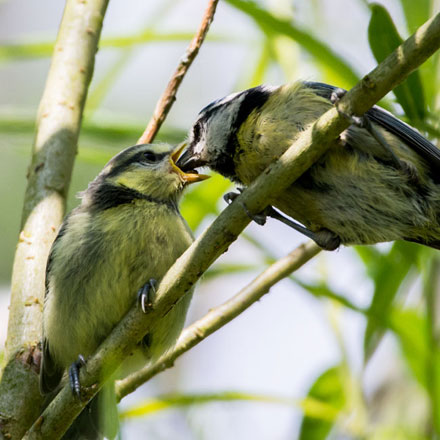
|
Common Blue Damselfly
|
Hoverfly - Eristalis arbustorum |
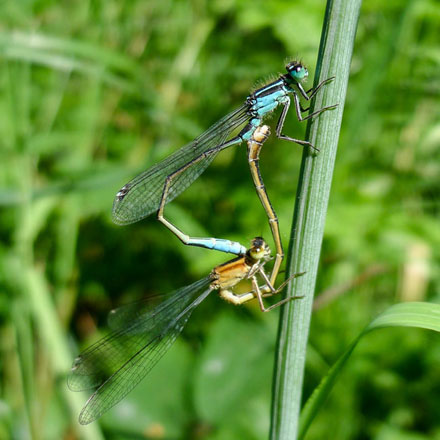
|
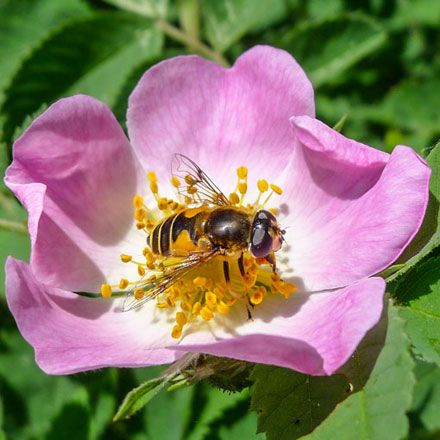
|
3rd
June 2018
Saltcoats,
Stevenston,
Irvine
With a low chance of
sunshine across most of Central Scotland we were guided
by a report on social media that Skuas and Great Northern Divers were
seen
at/from Saltcoats Harbour- that very morning. So it was west! We are
quite fond
of the cafe in Stevenston Morrisons as their food and service is
consistently
good. On Sunday they were offering a 19-item breakfast, the “Big
Daddy” for £6 , which was a bit of a
heart attack on a plate at our age so I stuck to my
usual “Wee Scottish”. Service was predictably
slower so we rated it 9/10. The sun was shining at
Saltcoats and
a pair of Feral Pigeons were soaking it up on the rocks. The usual
Herring Gulls were hanging about waiting for chips, the one shown below
being a 2nd cycle individual. We made our way to the Harbour end where
we sat waiting for passing Skuas. A very brave Rock Pipit foraged on
the rock and around an angler’s bags. A few Cormorants and
Shags flew
past but nothing more exotic.
Feral Pigeon
|
2nd Cycle Herring Gull
|
Rock Pipit
|
Shag
|
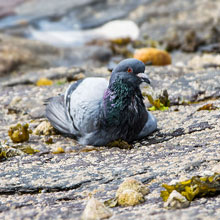
|
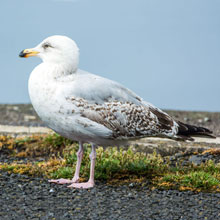
|
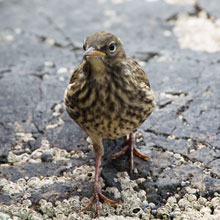
|
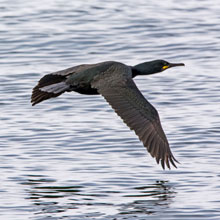
|
A solitary Grey
Heron ghosted low
over the water, south towards Stevenston. On a tiny rocky island just
north of the Harbour mouth a pair of Shags watched warily as a Seal
swam past. We realised that we were probably not going to see Skuas or
Divers so we decided to walk to the other side of the Harbour. On the
way there we encountered an inebriated gent feeding and conversing with
the Gulls. As they circled him I snapped a handsome Lesser Black-backed
Gull in flight. By the seawall I found a neat little Common Scurvygrass
plant. This is so-named as, before the widespread availability of
citrus fruits, it was eaten by sailors to prevent scurvy.
Grey Heron
|
Shag
|
Lesser Black - backed Gull
|
Common
Scurveygrass
|
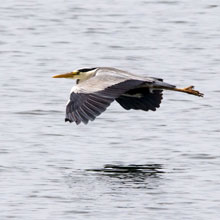
|
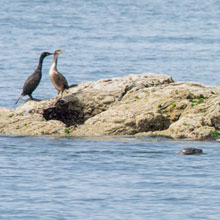
|
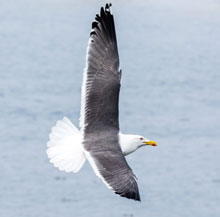
|
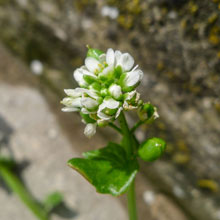
|
Further round
the Harbour we came
across another edible plant, Sea Radish, although I’m told it
is an
acquired taste. Offshore we saw lobster fishermen checking their traps.
A pair of Eider and a single Oystercatcher were the only birds we saw.
We decided then to move on to Stevenston Point.
Sea Radish
|
Lobster Boat
|
Eider
|
Oystercatcher
|
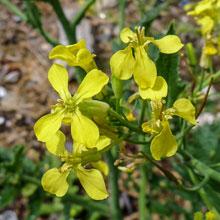
|
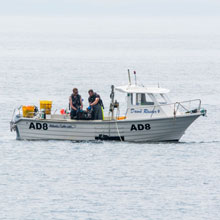
|
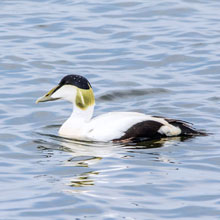
|
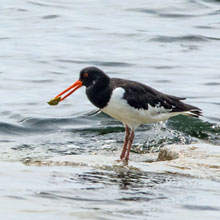
|
It
wasn’t as sunny at the Point
but we soon had seen interesting sights. A Shag flew by close to where
a couple of male Eiders were resting, one a juvenile. As I photographed
these I could hear Starlings emanating from the rocky shore. Eventually
they came into view - an adult with two fledglings, both screaming to
be fed. I managed shots of the adult picking the legs off of a small
crab before ramming it down the throat of one of its young.
John spotted a
female Eider with 3
ducklings swimming across the small bay north of the Point. The mother
was having a good preen followed by the usual flapping of wings. The
ducklings got a wash too as they were so close to the action. Next I
caught a quick shot of a diving Gannet about to hit the surface 100m
out. We moved on again after that, to Irvine Harbour. We were greeted
by the croaking calls of a pair of Sandwich Terns as they flew over the
River Irvine towards its mouth. In the water below them a juvenile Shag
was diving for fish.
Eider
|
Gannet
|
Sandwich Tern
|
Juvenile Shag
|
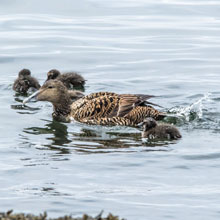
|
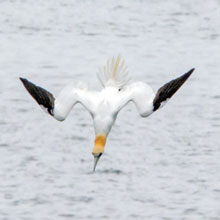
|
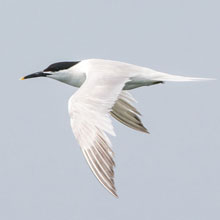
|
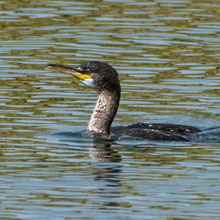
|
On the grassy
and stony verges of
the footpath I found some Biting Stonecrop that was just coming to
bloom. A succulent, it can store water in its leaves, so may thrive
even in very dry environments. Very close to it was Common Birdsfoot
Trefoil, a member of the pea family. It is often used as food for
livestock. At this point our peace was disturbed by a pair of
motorcyclists riding their bikes over the old Big Idea building on the
other side of the river. We decided to call it a day, but not before I
had captured a final image - of a handsome and proud Mute Swan sailing
up the river unconcerned by the unwelcome commotion.
Biting Stonecrop
|
Common Bird's - foot Trefoil
|
Big Idea
|
Mute Swan
|
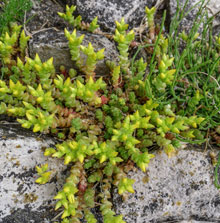
|
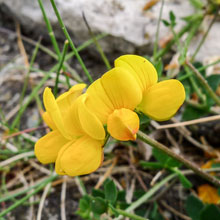
|
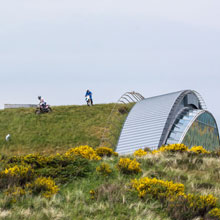
|

|
Overall though
it had been a very
pleasant excursion. We didn’t see the birds we were after but
our teas
and chocolate cream eclairs made it all good. There’s always
next week.
Pictures of the
Week:
Herring Gull
|
Rock Pipit
|
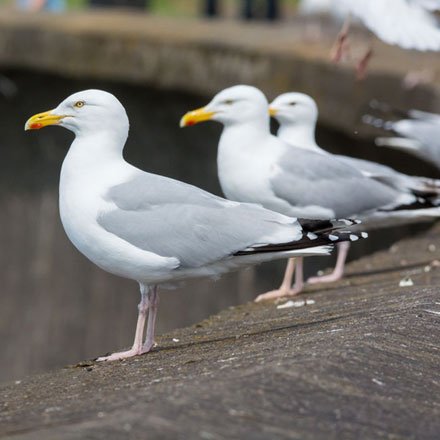
|
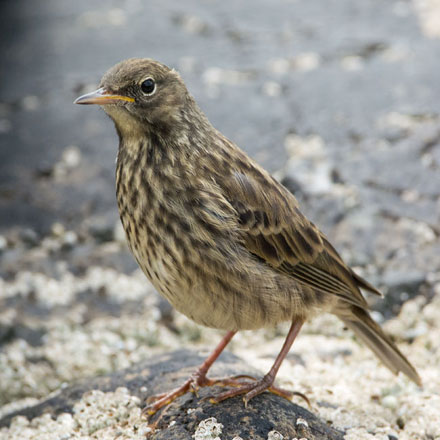
|
Starling
|
Common Seal
|
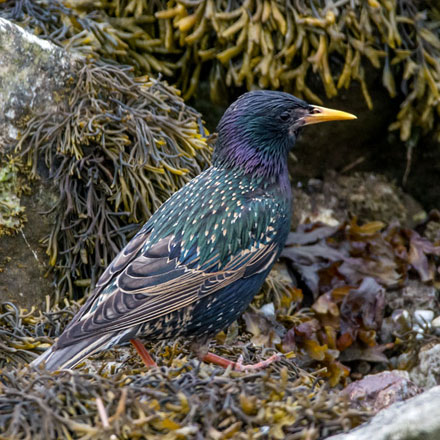
|
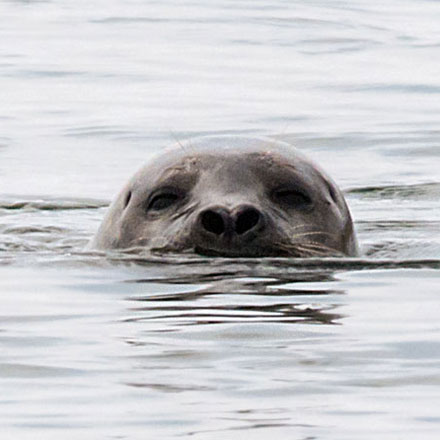
|
Back To Top
|

